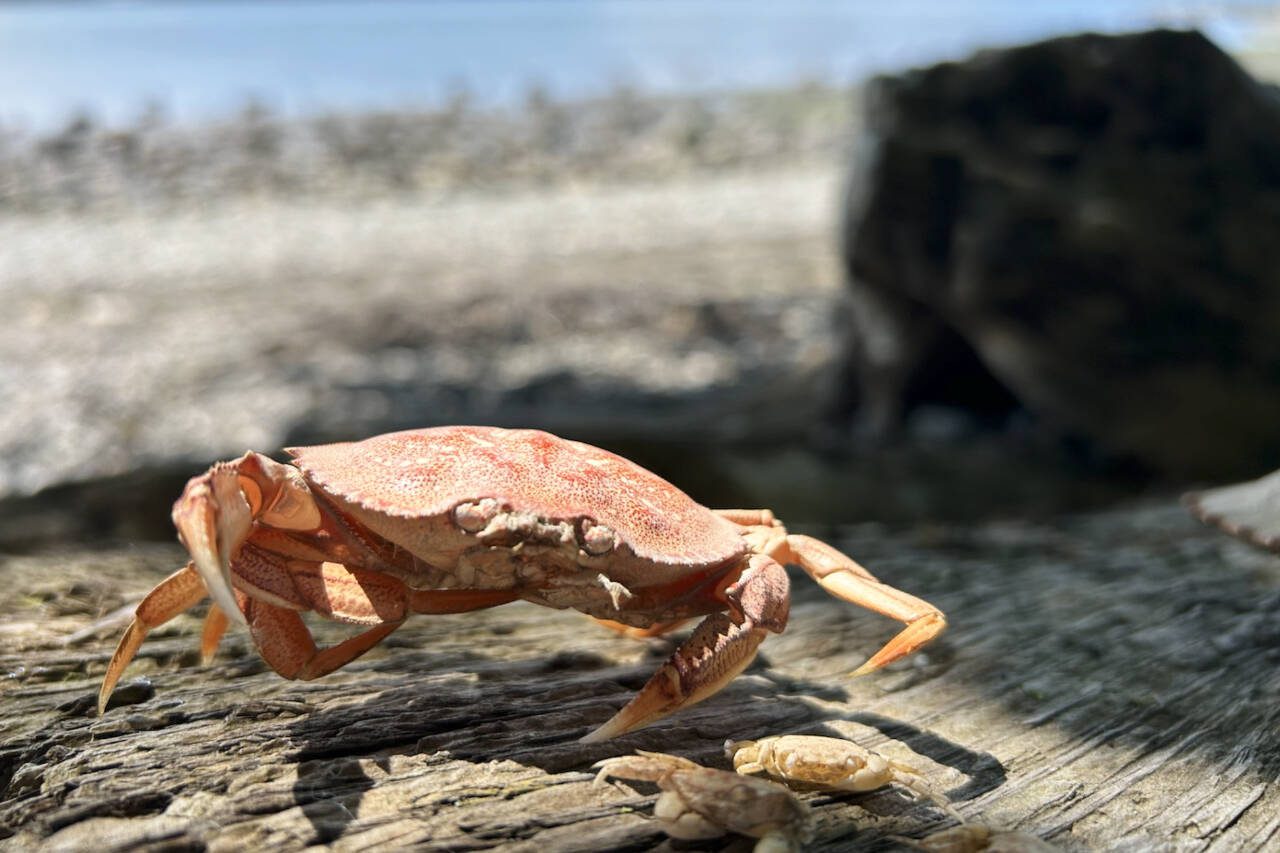SNOHOMISH — Washington State University is hosting a citizen science “Molt Search” program on June 2 in an effort to combat growing concerns about the European green crab.
Introduced to North America in the 1800s, the European green crab is considered one of the most invasive marine species by agencies across the country. Because it has few natural predators, it outcompetes native species and can destroy precious habitat, such as the eelgrass beds juvenile salmon and other young fish use as nurseries.
Washington agencies and tribes noticed an uptick in green crabs in 2018, with an even greater increase of sightings in 2021. In 2023, the Washington State Legislature appropriated over $6 million for green crab management.
As part of these management efforts, WSU Beach Watchers and Washington Sea Grant is promoting its Molt Search program. From 11 a.m. to 1 p.m. in the Gary Weikel Room at Willis Tucker Park, community members can learn how to conduct a timed survey for crab molt — outgrown and discarded shells — and report their findings through a mobile app.
“Since we are in the early stages of the spread of European Green Crab in inland Washington waters, early detection of these crabs is paramount,” Beach Watchers Program Coordinator Jonathan Robinson said. “That is why getting as many eyes out on the beach looking for European Green Crab molts is so important.”
On June 20, Washington Sea Grant is hosting its second annual Molt Blitz, where you can join citizen scientists across the state by reporting findings in your local area.
For more information on both events and European green crab management, you can visit https://wsg.washington.edu/crabteam/moltsearch/.
Eliza Aronson: 425-339-3434; eliza.aronson@heraldnet.com; X: @ElizaAronson.
Eliza’s stories are supported by the Herald’s Environmental and Climate Reporting Fund.
Talk to us
> Give us your news tips.
> Send us a letter to the editor.
> More Herald contact information.

























